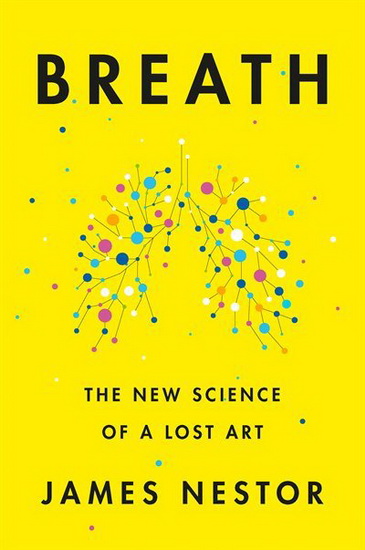Why and How Better Breathing Can Transform Your Life
The book Breath by James Nestor offers a fascinating exploration of the science of breathing. By combining scientific research, ancient techniques, and personal experiences, Nestor invites us to rediscover the transformative power of breath.
Why is breathing essential to our health?

Breathing is a vital physiological function, yet it’s often overlooked. Improper breathing can lead to a variety
of health problems, including:
- sleep apnea
- anxiety
- digestive issues
- chronic illnesses
James Nestor explains how, through human evolution and our modern habits (processed foods,
mouth breathing, chronic stress), we’ve altered our natural way of breathing—often to our own detriment.
Tip: Start by observing how you breathe throughout the day.
- Do you breathe through your mouth?
- Is your breath fast or shallow?
- Does it stay high in your chest?
These are signs that it may be time to retrain your breath.
Breathing techniques for a better life
Breathe through your nose
Nasal breathing is healthier because it:
- filters, warms, and humidifies the air
- helps regulate blood pressure
- promotes a better CO2 balance in the body
Tip: If you’re used to breathing through your mouth, try consciously keeping your mouth closed, and consider using nasal strips at night to encourage nose breathing.
Slow it down
Slow breathing sends calming signals to your brain. It can reduce stress and anxiety and improve mental clarity.
Tip: Try a heart coherence breathing exercise:
- Inhale for 5 seconds
- Exhale for 5 seconds
- Continue for 5 minutes, 2 to 3 times a day
Explore ancient techniques
The book explores time-tested methods such as pranayama (from yoga),
the Wim Hof Method, and Tummo breathing—each offering powerful benefits for both physical and mental health.
Tip: Start small. Try a short guided session inspired by yoga breathing or the Wim Hof Method through a reliable app or video.
Proven benefits of better breathing
Breathing properly can:
- Improve focus and sleep
- Reduce stress, overthinking, and anxiety
- Strengthen your lungs and cardiovascular health
The book shares many personal stories and case studies showing how small changes in the way we breathe can make a big difference in daily life.
How to incorporate conscious breathing into
your daily routine
You don’t need to be an expert. Here are a few simple ways to begin:
- One minute of mindful breathing when you wake up
- A short breathing break before a meeting or stressful moment
- Deep, slow breaths before going to bed
- Use tools like nasal strips or breathing apps
Tip: Start with just 5 minutes a day. Set a gentle reminder on your phone or leave a kind note on your mirror as a prompt.
Breathing well is a simple yet powerful skill. It supports your physical, mental, and emotional health. James Nestor’s book reminds us that what we often seek in complicated solutions is already within us: our breath.
So why not try it for a week?
Breathe consciously for a few minutes each day, and observe the changes.
You might be surprised by the difference.